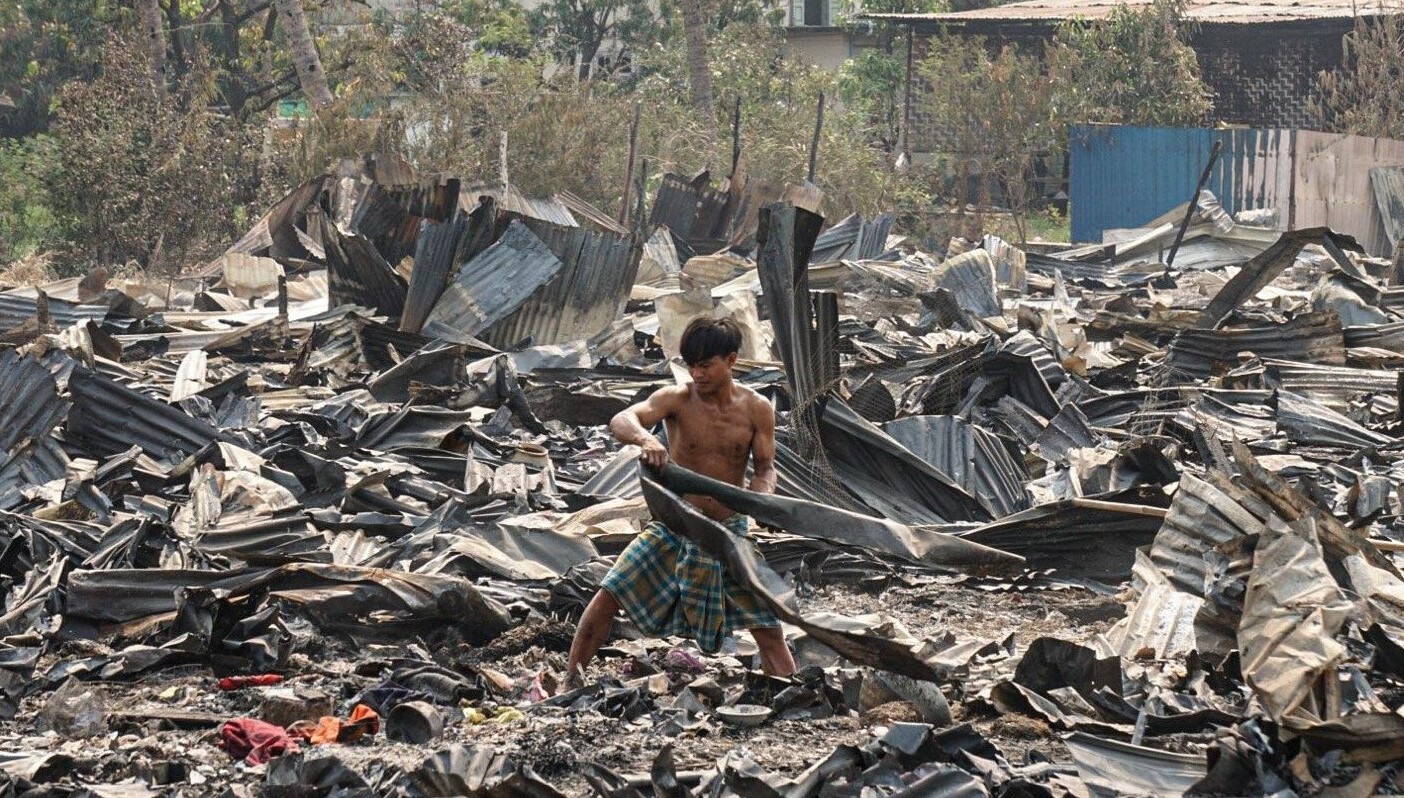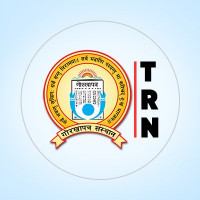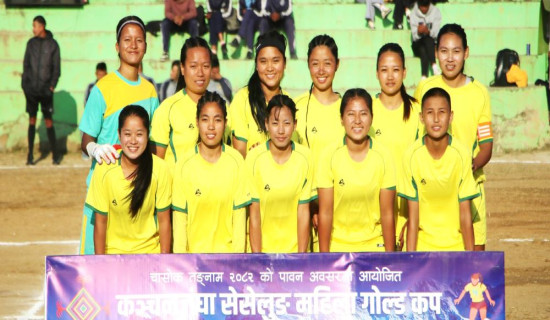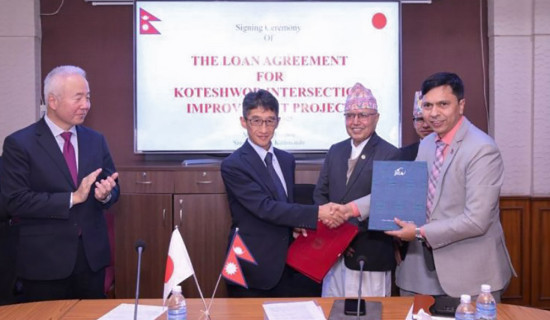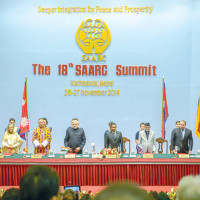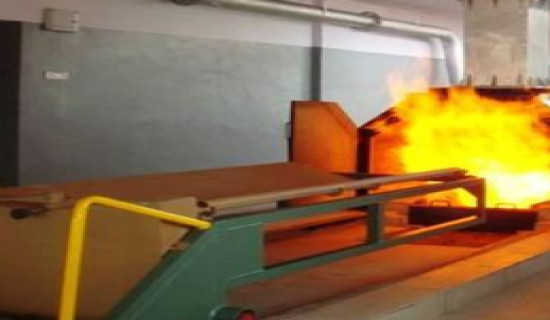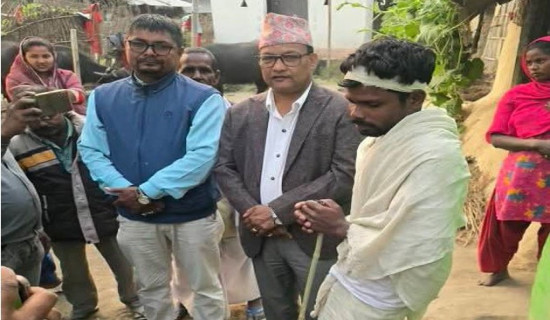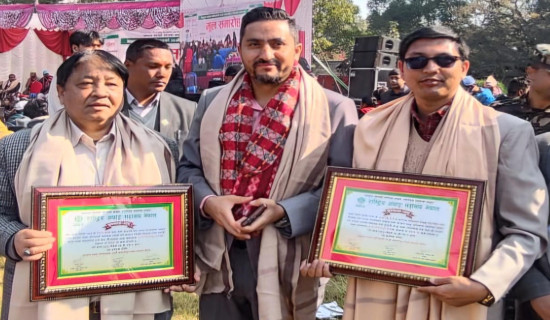- Wednesday, 3 December 2025
Devastating quake leaves Myanmar junta on shaky ground
By Aika Rey, Myanmar Data Citizens (Myanmar Now), April 25: Cries echoed through the rubble as buildings crumbled across central Myanmar. Families and neighbours dug first. Rescue teams arrived later—slowly, if at all.
As the cries faded into silence, the urgency of the rescue effort gave way to the next phase, recovery. Increasingly, resources were deployed along lines drawn since the military took power, rather than following the trail of destruction.
The March 28 earthquake left Mandalay and the nearby town of Sagaing in ruins. Even Naypyitaw, the heavily fortified capital, sustained serious damage, forcing the junta to put its disaster response front and centre.
In a departure from previous disasters where aid was blocked, this time the military regime was quick to declare a state of emergency and appeal for international help. Foreign rescue teams were immediately allowed entry into the country. But scepticism remains.
As in past crises, data and sources suggest the military diverted aid and rescue efforts to its strongholds, leaving others to fend for themselves.
While some observers say the quake may mark a tipping point for the regime, others argue that junta chief Min Aung Hlaing’s movements suggest he remains confident of his grip on power.
Strongest quake in a century
The March 28 earthquake was the most powerful, and possibly the deadliest, in Myanmar in a century. It occurred along the Sagaing Fault, which runs north to south through the heart of the country, where the India and Eurasia tectonic plates grind against each other.
The magnitude-7.7 quake, triggered by “strike-slip faulting”—when two plates rub side-to-side—had a shallow epicentre just 6.2 miles deep, amplifying its impact on the surface.
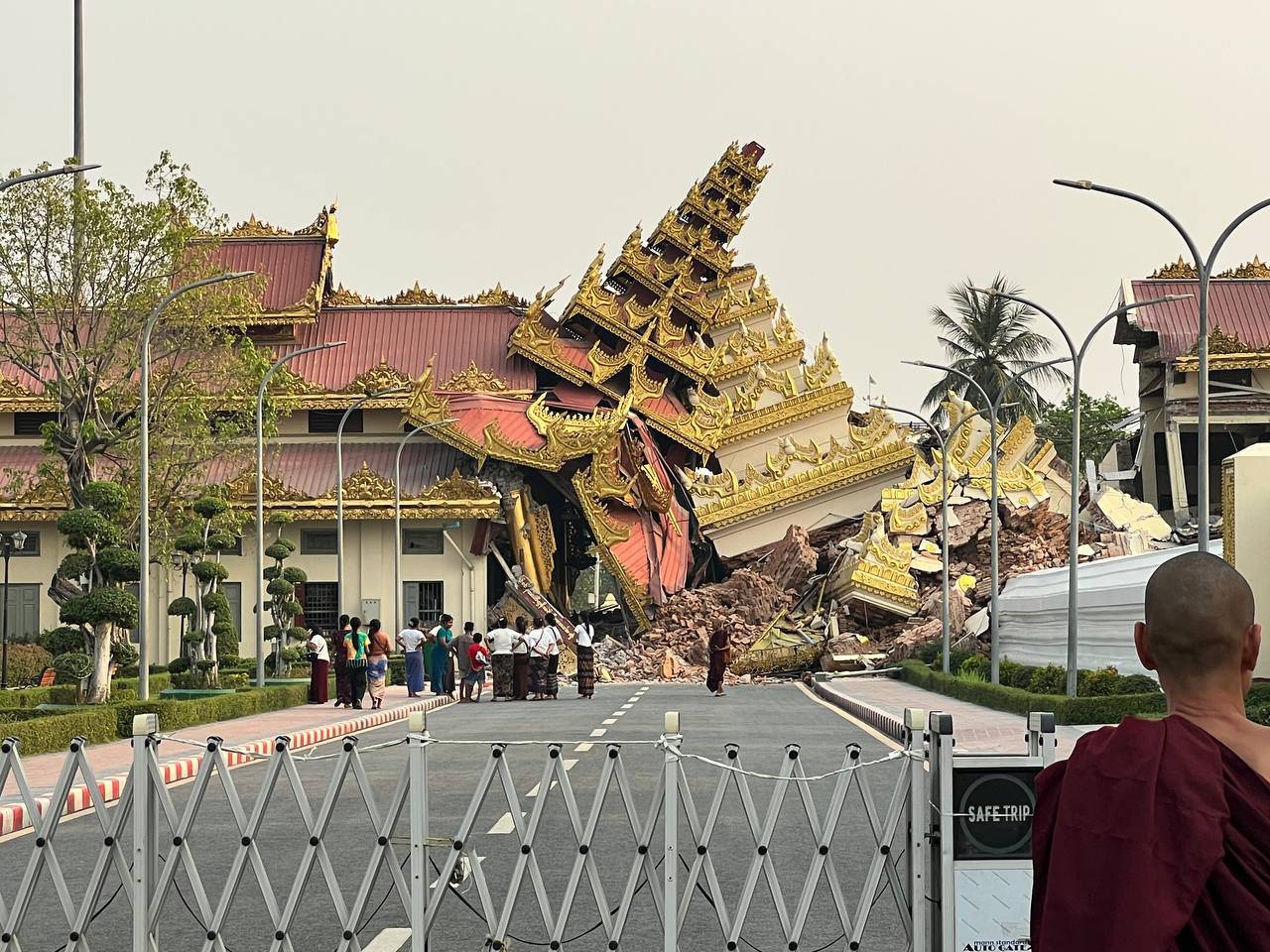
The Mahamuni Pagoda in Mandalay, a major Buddhist pilgrimage site, suffered from structural damage after the quake (Photo: Myanmar Now)
In Mandalay, Myanmar’s second largest city, residents were blindsided. One woman said that she ran into a store during the first tremor, then ran back outside when another magnitude-6.7 quake shook the ground.
“I looked around. The store was not shaking that much, but the glass, the wall, and other buildings were shaking violently. I could not see anything but dust and heard nothing but crackling sounds. At that moment, I was scared, wondering if our building was going to collapse too,” she said.
An estimated 17 million people—roughly a third of Myanmar’s population—were affected by the earthquake, based on an estimate by the United Nations Office for the Coordination of Humanitarian Affairs. An initial needs survey on over 850,000 people showed about half of them have yet to receive any form of assistance.
So far, 3,759 people were confirmed dead and over 5,000 people were injured, according to a state tally. Some 110 people remain missing. The United States Geological Survey (USGS) estimated the death toll could surpass 10,000.
USGS data showed Myanmar has not experienced an earthquake of this magnitude in the last 100 years, although there was one of similar strength in 1946, also along the Sagaing Fault.
Ian Watkinson of the Department of Earth Sciences at the Royal Holloway, University of London, as quoted by the Science Media Centre, said that the Sagaing Fault “tends to rupture via infrequent, relatively large earthquakes.”
A magnitude-7.5 earthquake recorded in 1930 and another magnitude-6.8 tremor in 1956 also struck along the fault.
About half of rescuers went to Naypyitaw
Hope faded as rescue efforts turned to recovery. By April 9, several foreign rescue teams had left the country, while those remaining found no survivors—only bodies beneath the rubble. Foreign medical teams, meanwhile, continued their work.
Junta troops have come under fire for what some critics call performative clean-up efforts—clearing debris of damaged buildings where no injuries or deaths were observed.
Analysis of the data from the State Administration Council, as the regime calls itself, showed that over half of the total foreign rescuer deployments were to Mandalay, while the rest were mostly sent to Naypyitaw, where casualties were much lower.
While it is unclear whether the figures reflect multiple deployments of the same personnel, data shows that Aungmyaythazan Township in Mandalay, home to the collapsed Sky Villa Condominium, received the highest number of foreign rescuers—about 600—including personnel from China, India, and Russia.
Zabuthiri Township in Naypyitaw, where several staff housing buildings were destroyed, followed with almost 500 rescuers from Vietnam, Indonesia, Singapore, China, Thailand, and Bangladesh.
These two areas were the first to receive international aid, just a day after the earthquake struck.
When measured against the number of people injured or killed, this meant that Naypyitaw received roughly eight international rescuers for every 10 casualties—a stark contrast to just three per 10 in Mandalay, the hardest hit region.
In Sagaing Region, which has many resistance strongholds, 50 Malaysian rescuers were deployed, meaning that there was only one rescuer per every 10 injured or killed. Locals and international aid teams estimated that three-quarters of the town of Sagaing was destroyed.
The rescuers deployed to Sagaing first arrived on March 31—three days after the quake.
“As far as I can see, the rescue efforts are mostly done by the people themselves,” a Mandalay resident said.
This sentiment was echoed by a resident of Sagaing, who has taken it upon himself to help those heavily affected by the earthquake. For him, the military has “no desire to help and rescue people.” He also accused the generals of using international aid “for their own interests.”
The disproportionate deployment of rescue teams, paired with minimal or obstructed relief in known opposition-held areas, solidified longstanding concerns about how the junta manipulates crises to serve its own agenda.
“The military leader believes that his power will be maintained by making people’s livelihoods difficult and causing more suffering. Never mind rebuilding the country—the people who are currently suffering can only get enough food and water through mutual aid,” the Sagaing resident said.
The town of Sagaing, home to many revered Buddhist monasteries, suffered widespread devastation. Many of the monasteries and convents on Sagaing Hill were flattened.
In the capital Naypyitaw, government buildings, staff housing, and schools were heavily damaged. Hundreds of civil servants were left homeless as operations limped on.
Weaponising aid
Hundreds of civil society groups have warned of the junta’s history of weaponising disaster relief to advance its political goals.
The groups urged both the public and international donors to work instead with grassroots networks, the National Unity Government, and ethnic resistance groups. UN Special Rapporteur for Human Rights in Myanmar Thomas Andrews has echoed this call.
While observers say such warnings reflect a deep mistrust of the junta’s intentions, others argue that experienced humanitarian agencies are equipped to navigate the junta’s tactics.
“Humanitarian assistance organisations, who’ve been working in Myanmar for four years after the coup and many for years before that, are not stupid. They are used to dealing with this kind of system,” said Vicky Bowman, former United Kingdom ambassador to Myanmar and director of the Myanmar Centre for Responsible Business.
Independent analyst David Mathieson cautions that the military may restrict relief access to opposition-held areas. NUG officials claimed that the junta is intentionally blocking aid from reaching these areas.
Mathieson said efforts to circumvent the military’s grip on aid delivery should be done by focusing on finding smaller civil society and humanitarian organizations on the ground.
“It’s just what they [the junta] do. It’s this twin imperative of security control and punishing anyone you perceive as an opponent. To me, that’s entirely consistent with the Myanmar military character,” Mathieson said.
An official at a UN agency involved in the relief programs for the earthquake, who declined to be identified, told Myanmar Now the UN is still waiting for permission from the junta to access the quake-affected areas which are under the control of resistance groups in Sagaing Region.
Ceasefire? ‘Only on paper’
Despite the junta declaring a temporary post-quake ceasefire in an attempt to win international support, resistance forces said that bombings have continued unabated.
Resistance leaders have told Myanmar Now that airstrikes persisted a day after the ceasefire was declared. Some argued that the junta has become more emboldened to attack in the wake of the NUG and its allies’ announcement of a ceasefire.
“Ceasefires to the Myanmar military are completely meaningless. They're just words on a page. Whether this is disaster relief or whether it's just a normal average day, ceasefires mean nothing to the military forces on the ground. They will just continue regardless,” Mathieson said.

Head of Myanmar’s ruling junta Min Aung Hlaing arrives in Bangkok on April 3 to attend the Bay of Bengal Initiative for Multi-Sectoral Technical and Economic Cooperation summit (Photo: AFP)
Resistance forces said the disaster merely exposed the junta’s blatant disregard for lives and its willingness to exploit chaos for strategic advantage.
Min Aung Hlaing’s decision to attend a regional summit to appeal for aid just days after the earthquake only reinforced these views.
“The fact that he was confident—and callous—enough to leave the country just days after the earthquake shows that he must have a certain level of confidence that he’ll be able to get back, which means that he can trust the military,” Mathieson said.
“They know they can control the narrative and control the movement of people coming in and actually try and accrue some form of legitimacy by being seen as benevolent and accepting,” he said of the junta chief’s swift appeal for aid.
But the analyst warned against falling for the facade. “He’s a war criminal. He should be in prison. It’s disgusting that he’s accruing all of this international adulation when he just simply doesn’t deserve it.”
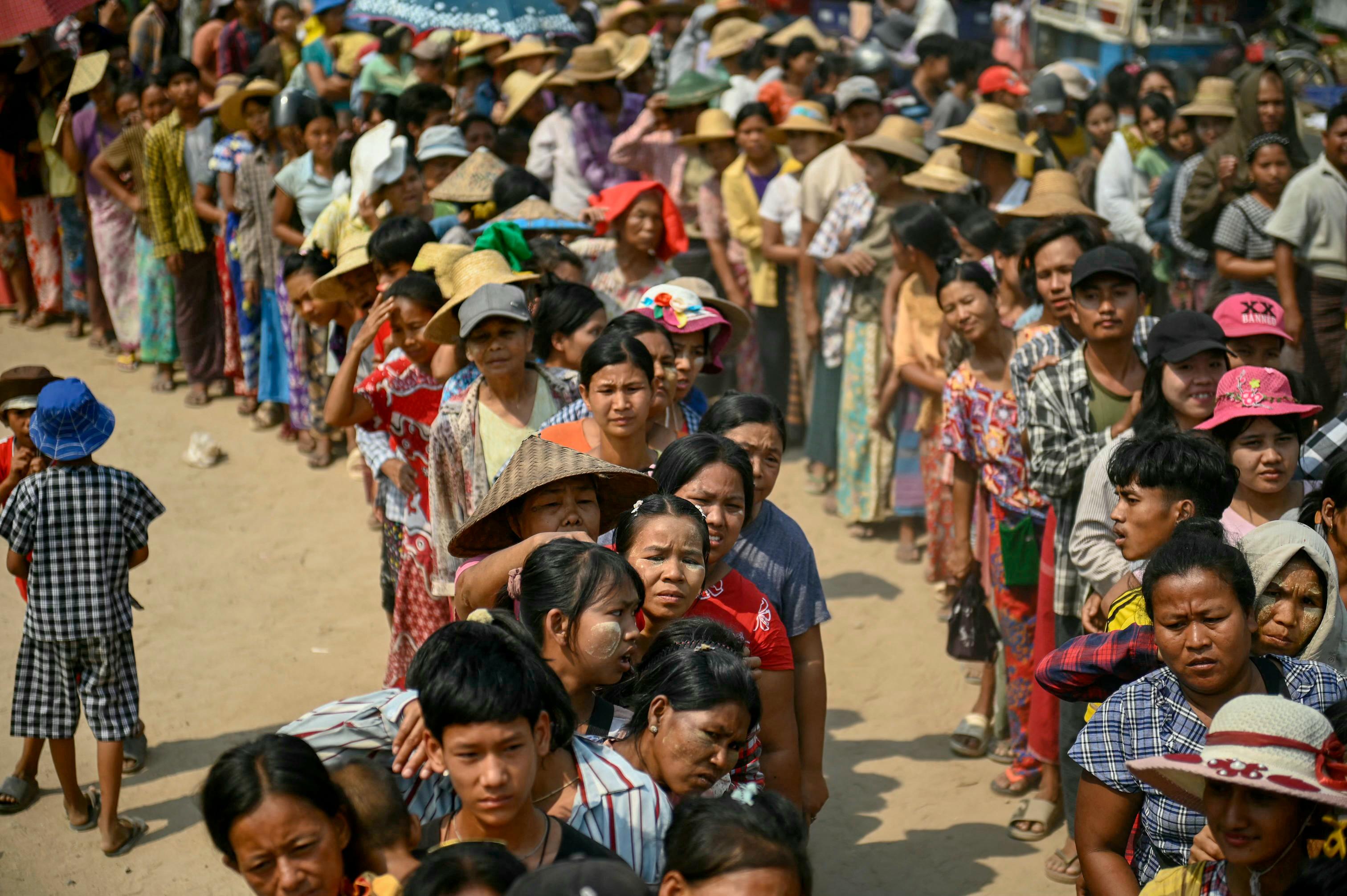
Residents line up for food aid in Sagaing on April 3 (Photo: AFP)
Post-quake reconstruction
As the dust settles, questions remain over how Myanmar will rebuild and recover amid a crippled economy and the withdrawal of US aid.
USGS estimated that economic losses from the quake might surpass Myanmar’s gross domestic product.
“If you look at the scale of destruction, the public sector infrastructure needs to be rebuilt with a massive combination of international assistance, if it comes, some private philanthropy and, perhaps, some state money—if there is any,” Bowman said.
“And then the rebuilding by the private sector and individuals requires confidence and optimism, and that's going to be lacking in the Mandalay economy right now, and in the country as a whole. So, I don't see it happening,” she added.

Residents in Sein Pan, one of the worst-impacted wards in Mandalay, lost their homes in the earthquake and a subsequent fire (Photo: Myanmar Now)
Mathieson shares the same bleak outlook.
“You've got to think about long-term reconstruction and long-term economic development. And it's not clear where that money is going to come from,” said Mathieson.
“Unfortunately, I think moving forward and looking at the costs of reconstruction and rehabilitation, Myanmar really is on its own,” he said.

